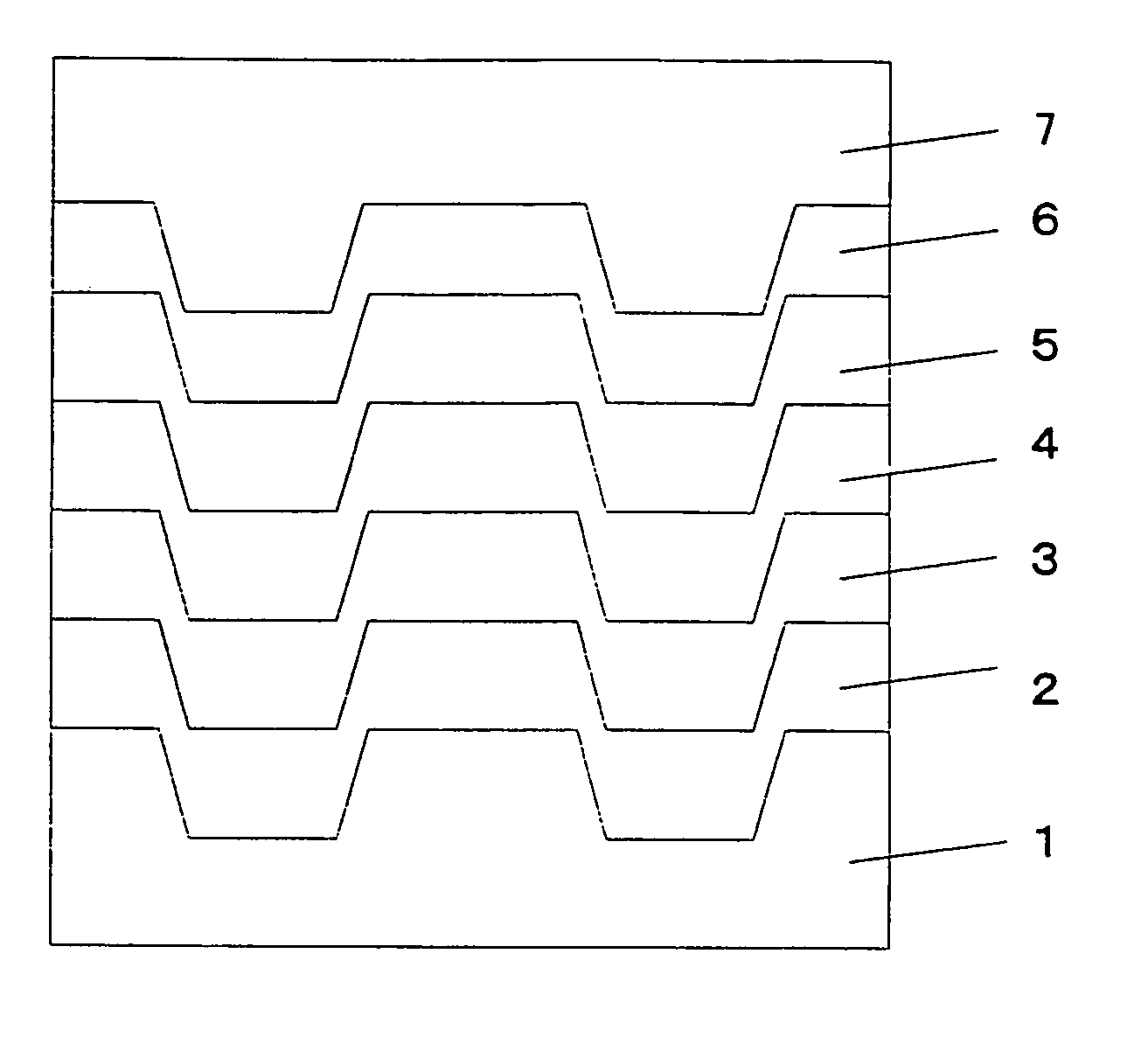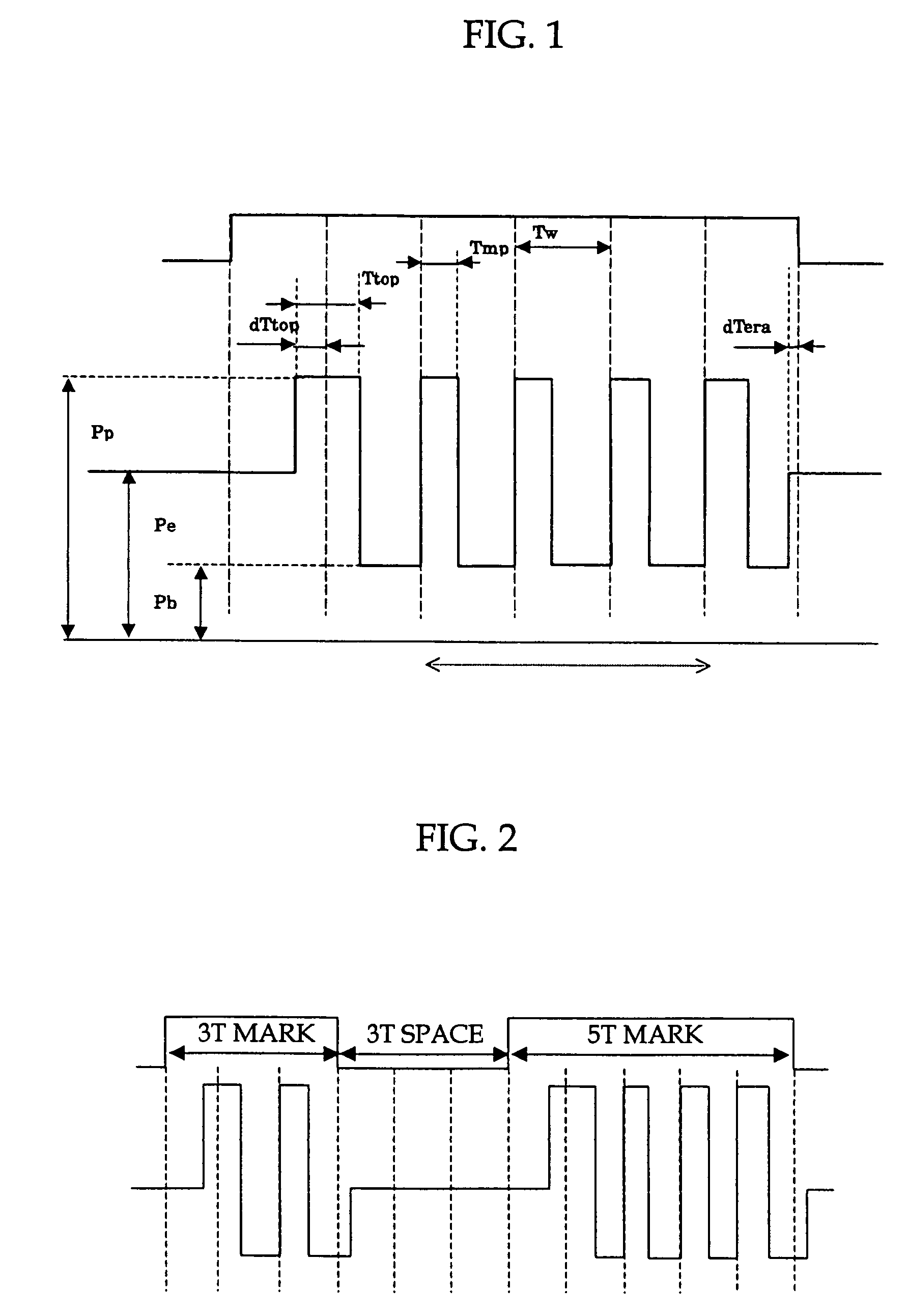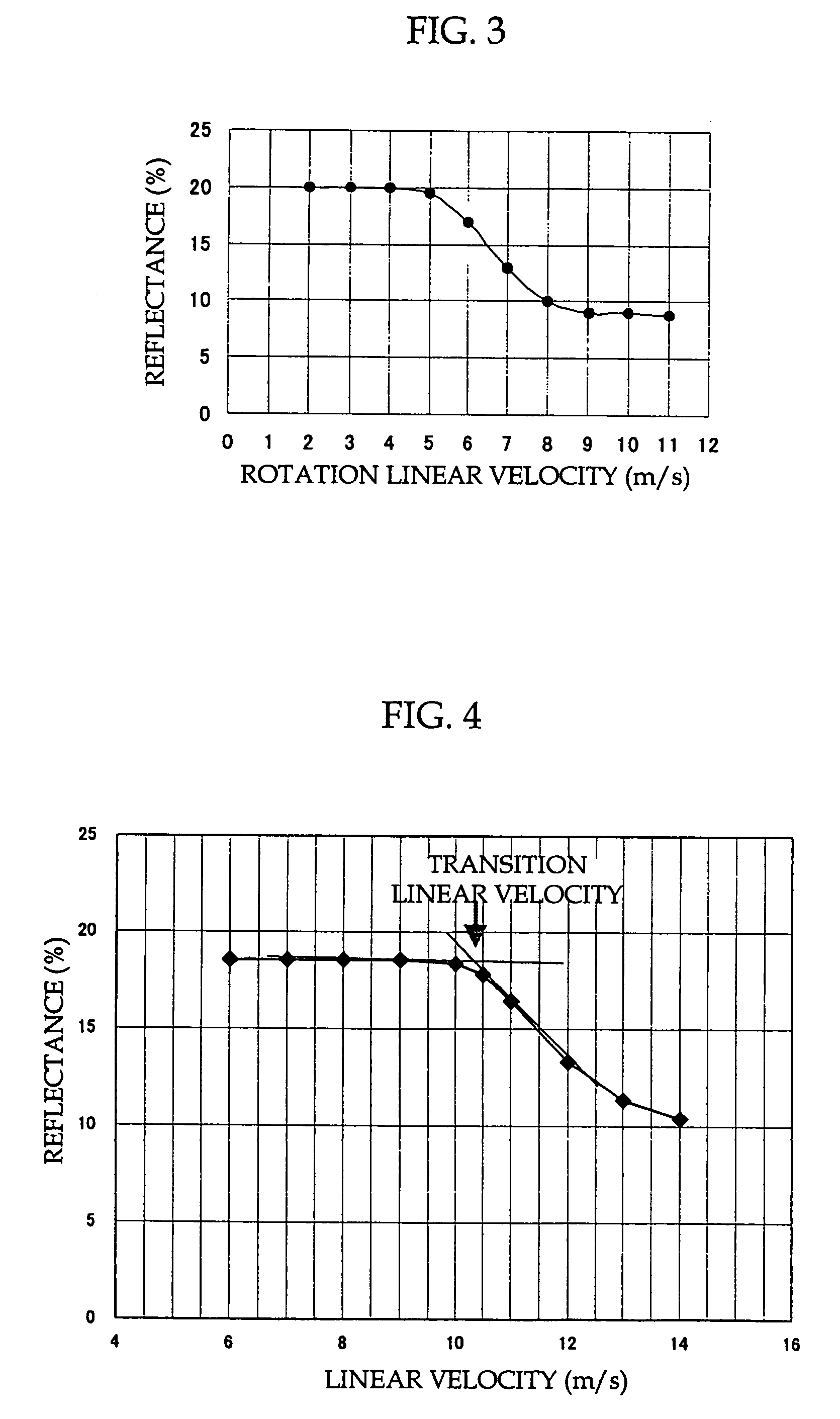Optical recording medium
a recording medium and optical technology, applied in the field of phase change optical recording media, can solve the problems of insufficient recording, inability to provide optical recording media capable of high-speed recording, and inability to meet the requirements of recording, etc., and achieve excellent archival stability and high compatibility
- Summary
- Abstract
- Description
- Claims
- Application Information
AI Technical Summary
Benefits of technology
Problems solved by technology
Method used
Image
Examples
example a-1
[0174]A disc having a lower protective layer, a recording layer, an upper interfacial layer, an upper protective layer, a sulfuration-inhibiting layer, and a reflective layer arranged on the substrate in this order was used. The lower protective layer comprised 80 mol % of ZnS and 20 mol % of SiO2 and had a thickness of 65 nm. The recording layer had a composition of Ag0.7In2.6Sb71.5Te20.9Ge4.3 and had a thickness of 15 nm. The upper interfacial layer was arranged between the recording layer and the upper protective layer, comprised 80 mol % of (ZrO2-3 mol % Y2O3) and 20 mol % of TiO2 and had a thickness of 2 nm. The upper protective layer comprised 80 mol % of ZnS and 20 mol % of SiO2 and had a thickness of 10 nm. The sulfuration-inhibiting layer comprised Si and had a thickness of 4 nm. The reflective layer comprised Ag and had a thickness of 140 nm.
[0175]The disc was initialized at a power of 1200 mW, a linear velocity of 9 m / s and a feed speed of 20 μm / r.
[0176]In this procedure,...
example a-2
[0182]A disc having a lower protective layer, a lower interfacial layer, a recording layer, an upper protective layer, a sulfuration-inhibiting layer, and a reflective layer arranged on the substrate in this order was used. The lower protective layer comprised 80 mol % of ZnS and 20 mol % of SiO2 and had a thickness of 63 nm. The lower interfacial layer was arranged between the recording layer and the lower protective layer, comprised 80 mol % of (ZrO2-3 mol % Y2O3) and 20 mol % of TiO2 and had a thickness of 2 nm. The recording layer had a composition of Ag0.7In2.6Sb71.5Te20.9Ge4.3 and had a thickness of 15 nm. The upper protective layer comprised 80 mol % of ZnS and 20 mol % of SiO2 and had a thickness of 12 nm. The sulfuration-inhibiting layer comprised Si and had a thickness of 4 nm. The reflective layer comprised Ag and had a thickness of 140 nm.
[0183]The disc was initialized at a power of 1200 mW, a linear velocity of 9 m / s and a feed speed of 20 μm / r.
[0184]In this procedure, ...
example a-3
[0187]A disc having a lower protective layer, a lower interfacial layer, a recording layer, an upper interfacial layer, an upper protective layer, a sulfuration-inhibiting layer, and a reflective layer arranged on the substrate in this order was used. The lower protective layer comprised 80 mol % of ZnS and 20 mol % of SiO2 and had a thickness of 63 nm. The lower interfacial layer was arranged between the recording layer and the lower protective layer, comprised 80 mol % of (ZrO2-3 mol % Y2O3) and 20 mol % of TiO2 and had a thickness of 2 nm. The recording layer had a composition of Ag0.7In2.6Sb71.5Te20.9Ge4.3 and had a thickness of 15 nm. The upper interfacial layer was arranged between the recording layer and the upper protective layer, comprised 80 mol % of (ZrO2-3 mol % Y2O3) and 20 mol % of TiO2 and had a thickness of 2 nm. The upper protective layer comprised 80 mol % of ZnS and 20 mol % of SiO2 and had a thickness of 10 nm. The sulfuration-inhibiting layer comprised Si and ha...
PUM
| Property | Measurement | Unit |
|---|---|---|
| dimensions | aaaaa | aaaaa |
| groove width | aaaaa | aaaaa |
| groove width | aaaaa | aaaaa |
Abstract
Description
Claims
Application Information
 Login to View More
Login to View More - R&D
- Intellectual Property
- Life Sciences
- Materials
- Tech Scout
- Unparalleled Data Quality
- Higher Quality Content
- 60% Fewer Hallucinations
Browse by: Latest US Patents, China's latest patents, Technical Efficacy Thesaurus, Application Domain, Technology Topic, Popular Technical Reports.
© 2025 PatSnap. All rights reserved.Legal|Privacy policy|Modern Slavery Act Transparency Statement|Sitemap|About US| Contact US: help@patsnap.com



